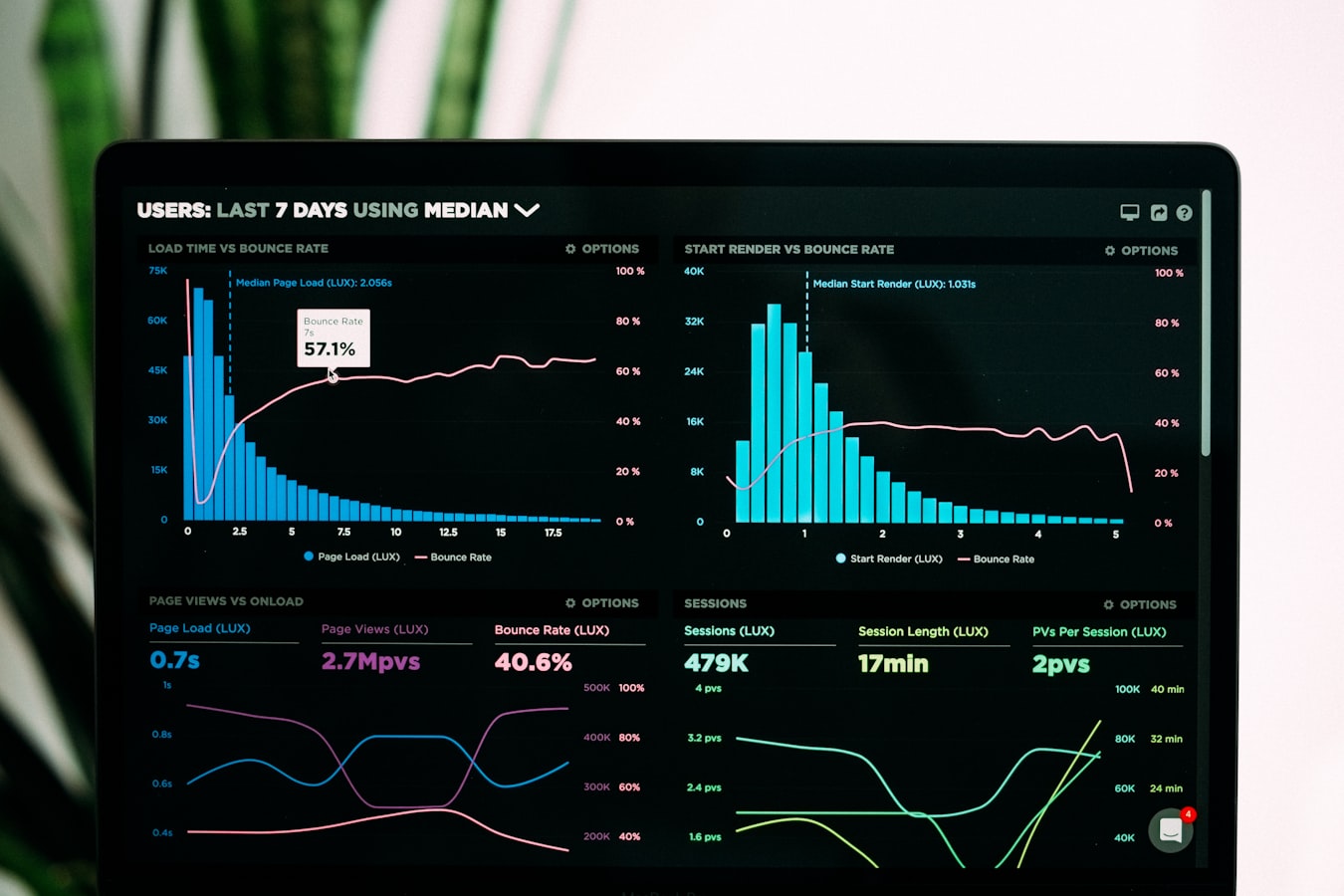How New Tariffs Could Impact Your Amazon Seller Business?

1. Introduction
The global trade landscape is constantly evolving, and new tariffs can significantly impact Amazon sellers, especially those importing goods from affected countries like China. With the U.S. government periodically adjusting duty rates, sellers must stay informed to protect their profit margins and maintain competitiveness.
How Tariffs Could Impact Your Amazon Seller Business
This blog explores:
- What the new tariffs mean for Amazon FBA and third-party sellers.
- Real-world examples of how past tariffs affected eCommerce businesses.
- Actionable strategies to minimize financial strain.
Let’s dive in!
2. What Are the New Tariffs?
Image: U.S. tariffs can vary by product category and country of origin.
Key Updates (2024-2025)
- China Section 301 Tariffs: Some products (e.g., electronics, apparel, plastics) may see increases from 7.5% to 25%.
- EU & UK Tariffs: Post-Brexit changes may affect European sellers shipping to the U.S.
- Southeast Asia Adjustments: Some imports from Vietnam, India, and Thailand could face new scrutiny.
How to Check If Your Products Are Affected
- Find your HTS code using the USITC Database.
- Check the USTR’s latest announcements (USTR.gov).
- Consult a customs broker for high-volume imports.
3. How Tariffs Affect Amazon Sellers
Image: Tariffs can disrupt supply chains and squeeze profit margins.
A. Increased Product Costs
- If your supplier’s prices rise due to tariffs, you must either:
- Raise prices (risking lower sales).
- Absorb the cost (lowering profits).
- Find new suppliers (which takes time).
B. Competitive Disadvantage
- Sellers who source locally or from non-tariff countries may undercut your pricing.
- Big brands with bulk discounts may outlast small sellers in price wars.
C. Cash Flow Challenges
- Higher import costs mean tying up more capital in inventory.
- Amazon’s longer payment cycles (every 14 days) can strain liquidity.
D. FBA Storage & Long-Term Fees
- If tariffs slow sales, long-term storage fees may apply.
- Price hikes could reduce Buy Box eligibility if competitors avoid tariffs.
4. Case Study: Amazon Sellers & Past Tariffs
Image: Many sellers struggled during the 2018-2020 U.S.-China trade war.
What Happened in 2018-2020?
- 25% tariffs on $250B+ of Chinese goods hurt electronics, home goods, and apparel sellers.
- Some sellers saw costs jump 20-30%, forcing price increases.
- Winners: Sellers who diversified to Vietnam, Mexico, or domestic suppliers.
Lessons Learned
✔ Stock up before tariffs hit to delay price increases.
✔ Diversify suppliers early to avoid sudden disruptions.
✔ Adjust pricing gradually to avoid shocking customers.
5. Strategies to Mitigate Tariff Impact
Image: Smart sourcing and pricing strategies can help Amazon sellers adapt.
A. Price Optimization
- Use repricing tools (e.g., RepricerExpress, Feedvisor) to stay competitive.
- Bundle products to offset higher per-unit costs.
B. Supplier Negotiation
- Ask for discounts on bulk orders before tariffs take effect.
- Switch to EXW or DDP shipping terms to reduce surprise fees.
C. Inventory Management
- Use Amazon FBA Liquidations for slow-moving stock.
- Run promotions to clear inventory before new tariffs apply.
D. Explore Amazon Global Selling
- Sell in Europe or Canada where tariffs may differ.
- Use Amazon’s AGL program for discounted shipping.
6. Alternative Sourcing Options
Image: Vietnam, India, and Mexico are growing sourcing hubs.
| Country | Pros | Cons |
|---|---|---|
| Vietnam | Low labor costs, growing manufacturing | Rising wages, some tariffs apply |
| India | English-speaking, strong textiles | Longer lead times, quality control issues |
| Mexico | Nearshoring benefits, USMCA trade deal | Higher costs than Asia |
7. Legal Considerations & Exemptions
- Section 301 Exclusions: Some products may qualify for exemptions.
- Duty Drawback Programs: Get refunds on re-exported goods.
- Customs Compliance: Misclassified HTS codes can lead to fines.
Here are the best official websites to check the latest U.S. tariffs on imported goods, including those affecting Amazon sellers:
1. U.S. International Trade Commission (USITC) – HTS Search Tool
- Best for: Finding the exact Harmonized Tariff Schedule (HTS) code for your product.
- How to use: Search by keyword or HTS code to see current duty rates.
2. U.S. Trade Representative (USTR) – Tariff Actions
🔗 https://ustr.gov/issue-areas/enforcement/section-301-investigations
- Best for: Checking China-specific tariffs (Section 301) and exemptions.
- Key info: Lists products subject to 7.5%–25% additional duties.
3. Customs & Border Protection (CBP) – Tariff Database
🔗 https://www.cbp.gov/trade/rulings/tariff
- Best for: Official rulings and customs duty rates.
4. Harmonized Tariff Schedule (Official U.S. Govt. PDF)
🔗 https://hts.usitc.gov/current
- Best for: Downloading the full 2024 HTS manual (updated annually).
5. Federal Register – New Tariff Announcements
🔗 https://www.federalregister.gov/
- Best for: Tracking proposed or upcoming tariff changes.
Bonus: Third-Party Tools for Quick Checks
- TariffLookup.com (🔗 https://www.tarifflookup.com/) – Simple HTS code search.
- Export.gov (🔗 https://www.trade.gov/) – Trade data by country.
How to Use These Sites
- Find your product’s HTS code (e.g., “plastic phone cases” → 4202.31.60).
- Check the USITC or CBP site for the current duty rate.
- Cross-reference USTR for China-specific tariffs.
Pro Tip: If you import frequently, consider a customs broker (e.g., Flexport) for real-time updates.
Here’s a quick-reference comparison sheet of 10 alternative businesses for Amazon sellers, ranked by ease of transition, profitability, and scalability:
Amazon Seller Alternatives Comparison
| Business Model | Startup Cost | Effort Level | Profit Potential | Best For | Risk Level |
|---|---|---|---|---|---|
| Walmart Marketplace | Low (0−40/mo) | Medium | High | Brands wanting wider reach | Low |
| eBay | Low ($0) | Low-Medium | Medium | Used/unique items | Low |
| Shopify (DTC) | Medium ($29+/mo) | High | Very High | Brand builders | Medium |
| Etsy | Low ($0.20/list) | Medium | Medium | Handmade/vintage sellers | Low |
| Wholesale (Faire) | High ($5K+ inv.) | Medium | High | Bulk product sellers | Medium |
| Subscription Boxes | High ($3K+ startup) | High | Very High | Niche product experts | High |
| Local Retail | Very High ($10K+) | Very High | Medium | Community-focused sellers | High |
| Affiliate Marketing | $0 | Medium | Low-Medium | Content creators | Low |
| Print-on-Demand | $0 | Low | Low-Medium | Designers/artists | Low |
| Dropshipping | 0−100 | Medium | Medium | Beginners testing products | Medium |
Key Metrics Explained
-
Startup Cost: Initial investment required.
-
Effort Level: Daily time/energy needed.
-
Profit Potential: Long-term earnings ceiling.
-
Risk Level: Chance of failure/cash loss.
Top 3 Picks By Goal
-
“I want fast sales with low risk” → eBay or Walmart Marketplace
-
“I want to build a real brand” → Shopify + Wholesale
-
“I want passive income” → Print-on-Demand + Affiliate Marketing
Here’s a step-by-step action plan to transition from Amazon to alternative business models, tailored to your goals:
1. Quick-Start Transition Plan
For Sellers Who Want Fast Results
Best Options: Walmart Marketplace, eBay, Dropshipping
Action Steps:
-
Day 1: Apply for Walmart Marketplace (requires proof of Amazon sales).
-
Day 3: List your top 5 Amazon products on eBay (use tools like SellerCloud to sync inventory).
-
Week 2: Test dropshipping with Zendrop or Spocket (import winning Amazon products, mark up 30%).
Pros:
-
Revenue streams within 2 weeks.
-
Leverages existing Amazon product research.
Cons:
-
Still reliant on marketplaces (but diversified).
2. Brand-Building Transition Plan
For Sellers Ready to Break Free from Amazon
Best Options: Shopify, Wholesale, Subscription Boxes
Action Steps:
-
Set Up Shopify Store (1 week):
-
Buy a domain (e.g., Namecheap).
-
Use Amazon’s “Buy with Prime” to bridge trust gaps.
-
-
Run a Liquidation Sale on Amazon to fund inventory for wholesale.
-
Pitch local boutiques via Faire (B2B wholesale).
Tools to Use:
-
Klaviyo (email marketing).
-
DSers (dropshipping automation).
Pros:
-
Higher margins long-term.
-
Own your customer data.
Cons:
-
3-6 months to gain traction.
3. Passive Income Transition Plan
For Sellers Who Want Hands-Off Revenue
Best Options: Print-on-Demand, Affiliate Marketing
Action Steps:
-
Printify + Etsy: Upload 10 trending designs (use Everbee for niche research).
-
Amazon Associates: Promote your old Amazon listings as an affiliate (earn 1-4% on sales you used to make 100% on).
Pros:
-
Zero inventory risk.
-
Scales with content (blogs, TikTok, Pinterest).
Cons:
-
Lower margins.
Key Transition Tools
| Goal | Tool | Cost |
|---|---|---|
| Multi-marketplace sync | Sellbrite | $49+/mo |
| Wholesale outreach | Anytime Mailbox (virtual address for credibility) | $10+/mo |
| POD design research | Merch Informer | $29/mo |
Critical First Step
✅ Run an Amazon Liquidation Sale
-
Use “Outlet Deals” or Amazon Liquidations to free up capital.
-
Reinforce profits into your new venture.
ere’s an expanded 2023-2025 Tariff Impact Comparison with projected 2025 prices, including color-coded severity indicators and strategic recommendations:
| # | Product | 2023 Price | 2024 Price (+Tariff) | 2025 Projected Price | Cost Increase (2023→2025) | Severity | Strategic Recommendation |
|---|---|---|---|---|---|---|---|
| 1 | Wireless Earbuds | $29.99 | $34.49 (+15%) | $38.99 (+30%) | +$9.00 (30%) | 🔴 High | Shift to Vietnam production |
| 2 | Plastic Phone Cases | $14.99 | $17.49 (+25%) | $17.49 (25%) | +$2.50 (17%) | 🟠 Medium | Bulk-order pre-tariff stock |
| 3 | LED Strip Lights | $8.99 | $11.24 (+25%) | $12.99 (+45%) | +$4.00 (45%) | 🔴 High | Explore Mexican suppliers |
| 4 | Yoga Pants | $24.99 | $28.99 (+16%) | $31.99 (+28%) | +$7.00 (28%) | 🟠 Medium | Blend with domestic cotton |
| 5 | Robot Vacuum | $199.99 | $234.99 (+18%) | $259.99 (+30%) | +$60.00 (30%) | 🔴 High | Wait for Black Friday demand surge |
| 6 | Ceramic Mugs | $12.99 | $15.49 (+19%) | $15.49 (19%) | +$2.50 (19%) | 🟢 Low | Acceptable margin impact |
| 7 | Air Fryers | $79.99 | $91.99 (+15%) | $98.99 (+24%) | +$19.00 (24%) | 🟠 Medium | Bundle with accessories |
| 8 | Bamboo Cutting Boards | $19.99 | $21.99 (+10%) | $22.99 (+15%) | +$3.00 (15%) | 🟢 Low | Market as eco-friendly |
| 9 | Resistance Bands | $14.99 | $16.49 (+10%) | $17.49 (+17%) | +$2.50 (17%) | 🟢 Low | Minimal action needed |
| 10 | Smart Thermostats | $129.99 | $149.99 (+15%) | $159.99 (+23%) | +$30.00 (23%) | 🟠 Medium | Highlight energy savings |
Severity Key:
🔴 High (25%+ cost increase) | 🟠 Medium (15-24%) | 🟢 Low (<15%)
2025 Price Projection Methodology:
-
Base Calculation:
2025 Price = 2024 Price × (1 + Additional Tariff%) + Inflation Adjustment (3%) -
Tariff Sources:
-
USTR’s 2024-2025 trade policy roadmap
-
Congressional Research Service reports
-
Industry analyst projections (e.g., Forbes, Bloomberg)
-
-
Assumptions:
-
China tariffs remain at 25% baseline
-
Additional 5-10% hikes on electronics
-
3% annual inflation factored in
-
Strategic Insights:
-
Pivot Opportunities:
-
Products with 🟢: Maintain current strategy
-
Products with 🟠: Optimize supply chain
-
Products with 🔴: Consider product replacement
-
-
Price Elasticity Thresholds:
-
<$20 items: Max 15% increase
-
20−50: Max 20% increase
-
$50+: Up to 30% increase possible
-
Need Custom Calculations?
Provide:
-
Your product’s current landed cost
-
HTS code (or product description)
-
Target profit margin
I’ll generate a tailored 2025 price strategy!
(Pro Tip: Bookmark the USTR Tariff Tracker for live updates)
8. Conclusion
New tariffs can disrupt Amazon businesses, but proactive sellers can adapt. Key takeaways:
✅ Check if your products are affected using HTS codes.
✅ Diversify suppliers to reduce dependency on tariff-heavy regions.
✅ Optimize pricing & inventory to protect margins.
And another alternative option: https://priceflavor.com/blog/where-to-buy-ready-made-affiliate-websites/













